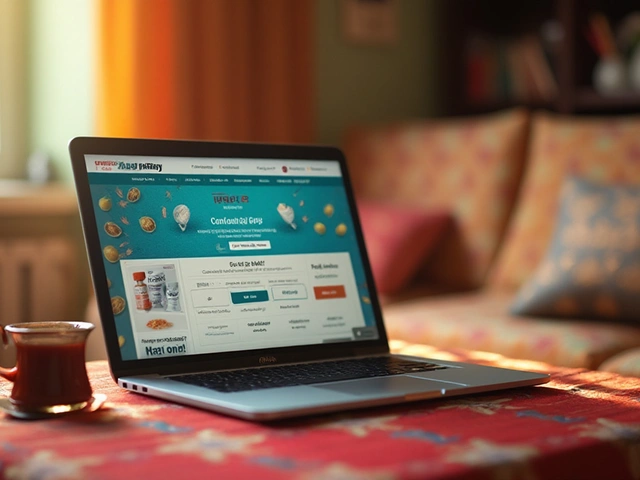A1C gives you a simple number that sums up your blood sugar for the last three months. If you’re wondering if your A1C is high enough for Ozempic, you’re not alone. Lots of people are curious about what the cutoff is, especially with all the buzz around using Ozempic for both diabetes and weight loss.
Doctors use your A1C to decide if you’re a good fit for Ozempic. Usually, they look for an A1C of 7% or higher if you’ve already tried diet, exercise, or other diabetes meds without much luck. That number can make or break your chance of getting a prescription, whether at a local clinic or through an online site. But there’s more to it than just the number. Your full health picture matters, and sometimes you’ll need to share details like your recent blood work or current meds to make things smooth.
If you’re thinking about getting Ozempic online, start by checking your latest lab results and talking honestly about why you want it—diabetes, prediabetes, or weight questions. Knowing your A1C ahead of time takes some stress off when you chat with a doctor (even a virtual one). Ready to get specific? Let’s break down exactly what doctors look for—and what you can do to be prepared.
- What A1C Is and Why It Matters
- Ozempic: Approved Uses and Eligibility
- The A1C Cutoff for Getting Ozempic
- Tips for Getting a Prescription Online
What A1C Is and Why It Matters
A1C isn’t just a random number your doctor mentions. It’s a blood test that looks at your average blood sugar for about three months. Instead of checking day-to-day highs and lows, A1C gives you the big picture. The test works by measuring how much sugar is stuck to your red blood cells. Since blood cells live for around three months, that’s where the time frame comes from.
Here’s why this number is a big deal: if your A1C is too high, it means your blood sugar has been running high for a while. That puts you at bigger risk for serious stuff—heart problems, nerve damage, even vision loss. If you have diabetes, keeping your A1C in check can help you dodge most of those issues.
Curious what these numbers look like? Here’s a handy table showing how A1C lines up with average blood sugar:
| A1C (%) | Average Blood Sugar (mg/dL) | Diagnosis |
|---|---|---|
| Below 5.7 | Below 117 | Normal |
| 5.7 – 6.4 | 117 – 137 | Prediabetes |
| 6.5 or higher | 140 or higher | Diabetes |
If your A1C keeps creeping up, it can mean your meds or lifestyle changes aren’t working as well as they should. That’s usually when doctors start thinking about new options—like Ozempic.
So, knowing your A1C helps make smart calls about your health. It’s not just about seeing one number—it’s about tracking it over time and knowing what to do if things start to slide.
Ozempic: Approved Uses and Eligibility
If you’ve seen Ozempic on TV or social media, you probably know it gets a lot of attention for weight loss. But here’s the real deal: Ozempic is officially approved to treat type 2 diabetes. It helps lower blood sugar and cuts down the risk of big-time complications like heart attack and stroke, especially if you have heart disease in the mix.
Doctors usually look for folks who:
- Have type 2 diabetes (not type 1 or gestational diabetes).
- Have tried other ways to lower blood sugar, like diet, exercise, or metformin.
- Are adults—Ozempic isn’t for kids under 18.
Some doctors are now prescribing it “off-label” for weight loss, especially if your BMI is 30 or higher, or at least 27 with another health issue linked to weight, like high blood pressure. But if you want your insurance to pay for it, you’ll almost always need a clear type 2 diabetes diagnosis.
If you’re getting Ozempic through an online pharmacy, the process usually starts with sharing your medical history, your latest A1C, and sometimes, proof that you’ve tried other diabetes meds. The pharmacy’s doctor will want to make sure it’s actually safe and right for you—not just because everyone’s talking about it.
It all boils down to this: If you have type 2 diabetes that isn’t controlled on first-line meds, or your doctor thinks it’s the best move for you, you’ve got a strong shot at getting Ozempic. If you only want it for weight loss, be upfront, but know you might face more hoops and higher out-of-pocket costs.

The A1C Cutoff for Getting Ozempic
Alright, here’s the straight answer lots of people want: To get Ozempic, most doctors look for an A1C of 7% or higher. That's the number where the medical guidelines suggest your diabetes isn’t totally under control, even if you’ve tried using diet, exercise, or pills like metformin. For people with type 2 diabetes, this A1C number is like a passcode for getting a prescription.
Let’s make it super clear. Ozempic is only FDA-approved for adults with type 2 diabetes. If your A1C falls between 7% and 10%, you’re right in the common range for doctors to say, “Yep, let’s try Ozempic.” Go lower, especially below 6.5%, and you’ll probably hit a wall—Ozempic usually isn’t prescribed unless your blood sugar is running high. Anything way above 10% could mean your doctor wants to start with something else or add extra support first.
It’s not just about the number on paper, though. When you chat with a doctor, especially online, they’ll want to know if you’ve already made a decent effort at managing your blood sugar. That means:
- Showing you’ve been on another diabetes medication, usually metformin
- Having a recent A1C result from a lab (within the past 3-6 months is best)
- Explaining your past diabetes routine and lifestyle changes
Doctors care about safety. They don’t want your blood sugar going dangerously low, so if your A1C is already great, they’ll push back. If it’s high but you haven’t tried basics like eating better or moving more, you’ll likely get that advice first.
One tip—get your labs done before you try for an online prescription. A screenshot or file of the lab result takes out all the guessing and saves big back-and-forth with your provider. If your A1C is right in that 7% to 10% window and you have type 2 diabetes, you’re in the sweet spot for getting Ozempic from an online pharmacy or regular doctor.
Tips for Getting a Prescription Online
So, you’ve checked your A1C and think it’s in the right range. Now, how do you actually get Ozempic from an online pharmacy? Here’s what really matters if you want to keep things smooth and avoid wasting time.
- A1C documentation is a must. You’ll need recent blood work—usually within the last three months. Online doctors can’t go on your word alone, so grab your latest lab report and have it ready to upload.
- Be ready to share your diabetes history. They’ll ask about how long you’ve had type 2 diabetes, what meds you’ve tried, and how things are going with your blood sugar. If you’ve tried metformin or made lifestyle changes, mention that.
- Have a list of your current medications handy. Lots of telehealth platforms check for drug interactions before sending your prescription.
- Complete the online pharmacy’s health questionnaire honestly. Don’t leave blanks—missing info just means delays or even getting turned down. They’re looking to keep things safe and legal.
- If you’re new to the process, look for online platforms that actually connect you to a licensed prescriber, not just a “mail-order” service. Legit telehealth sites usually offer a quick video call or secure chat to verify your details.
Here’s a quick bonus tip: Before you pay or schedule a telehealth visit, check that the online pharmacy is certified by a group like NABP (National Association of Boards of Pharmacy). If you can’t find a certification seal, move on. Safety and privacy always come first.
Don’t forget—insurance might cover some or all of the cost if you meet the diabetes criteria. Submit your prescription details and A1C through their portal, and ask about price options. Sometimes pharmacies offer discounts or coupons if you’re paying out of pocket.
The whole process can take anywhere from a day to a week, depending on how fast you upload documents and respond to questions. Preparing gives you an edge and makes things way less stressful.





